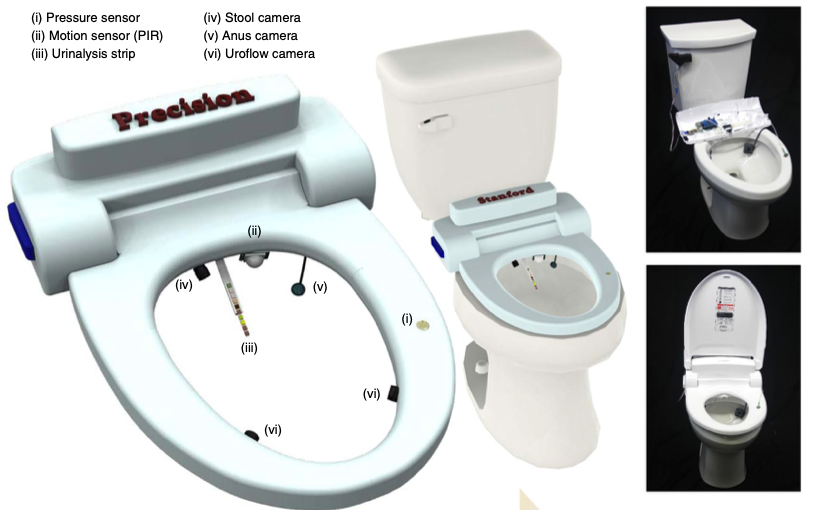Using built-in technology, a smart toilet is essentially is a device with a diverse range of features that allows interacting with the user, such as a heated seat and automatic dryer. They can be found in smart homes and high-tech regions across the world.

While the features so far developed might be useful, a group of researchers decided to take this to the next step and develop a proof-of-concept smart toilet module designed to monitor a user’s health based on their urine and stools.
The device would be able to identify users through an anal scan using a camera tucked under the seat before checking their waste for disease markers including early signs of cancer, said the U.S.-led team who developed the prototype.
“Our concept dates back well over 15 years,” said in a statement Sanjiv Sam Gambhir, professor and chair of radiology at Stanford. “When I’d bring it up, people would sort of laugh because it seemed like an interesting idea, but also a bit odd.”
The system mounts on a conventional sit-down toilet and utilizes cameras to measure the user’s feces. At the same time, a pressure sensor built into the toilet seat monitors the bowel movement’s duration. Both of these measures can reveal conditions like chronic constipation and irritable bowel system.
At the same time, users who stand to urinate can have their velocity, flow, and duration measured by camera, while test strips automatically extend into the stream for urinalysis, which can ascertain a variety of chemical levels and tests for numerous substances.
The system then uploads all of the user’s results to a protected cloud. Individual users are identified via a fingerprint scanner embedded in the flush lever as well as by “anal print”. A camera on the toilet module images the user’s anus, allowing an algorithm to link the anus image to a specific person on subsequent use.
“The toilet will ultimately function as the daily clinic for continuous monitoring of human excreta, feeding data into models of human health that can be used for screening and subsequent diagnostics,” the researchers argued
The current module is nowhere close to being in stores as it’s expensive, too inaccurate for everyday use, and unable to provide urinalysis for those who sit to pee. Nevertheless, it’s the first step, as the researchers hope to improve their design in the coming years.
“We aim to include multiple, clinically relevant assays in our system: microfluidics observation of cellular components from urine, physical, quantitative analysis of defecation, and sample-to-answer type biochemical analysis of stool, including genomics and microbiomics,” they argued.









